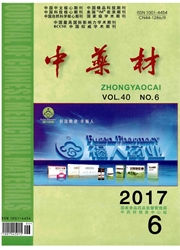

 中文摘要:
中文摘要:
目的:了解储藏中药材孳生肉食螨种类及其群落与生境相互关系。方法:从安徽淮南、芜湖和宣城采集储藏中药材样本共60种,采用振筛分离法、直接镜检法、电热集螨法、水膜镜检法和光照驱螨法分离其中的孳生螨,光镜下鉴定螨种并计数。结果:60份样本中孳生肉食螨的有48份,孳生率为80.0%(48/60),共检出肉食螨6种,隶属于肉食螨科中的肉食螨属(Cheyletus)、单梳螨属(Acaropsis)、触足螨属(Cheletomorpha)、真扇毛螨属(Eucheyletia)、拟肉食螨属(Pseudocheyles);淮南、芜湖和宣城3个地区肉食螨的平均孳生密度约为101.83只/g,平均物种丰富度指数约为1.54,物种多样性指数约为2.55,物种均匀度指数约为0.95。结论:上述3个城市的部分储藏中药材中有肉食螨孳生,在中药材储藏和加工过程中应注意螨类防治。
 英文摘要:
英文摘要:
Objective:To investigate the species of Cheyletoid mites breeding status in the stored traditional Chinese medicinal materials and the relationship between its community and habitats. Methods : A total of 60 samples of the traditional Chinese medicinal materials were collected from Huainan, Wuhu and Xuancheng in China. The mites were isolated with shakesieve shock, directicopy, Tullgren funnel, waternacopy and redricopy, and identified and counted under the light microscope. Results : Cheyletoid mites were represented in 48 of the 60 samples, and the breeding rate accounted for as high as 80. 0% (48/60). Totally, 6 species of Cheyletoid mites were identified, which belonged to Cheyletus, Acaropsis, Cheletomorpha, Eucheyletic and Pseudocheyles genera under the family of Cheyletidae. In the three investigated areas, the average breeding density of Cheyletoid mites was 109. 75 heads/g, and average richness index was 1.54. The index of species diversity was 2. 55 and the number of evenness was 0.95. Conclusion: This result entails positive prevention and control of the mite breeding in storage and processing of herbal materials.
 同期刊论文项目
同期刊论文项目
 同项目期刊论文
同项目期刊论文
 期刊信息
期刊信息
